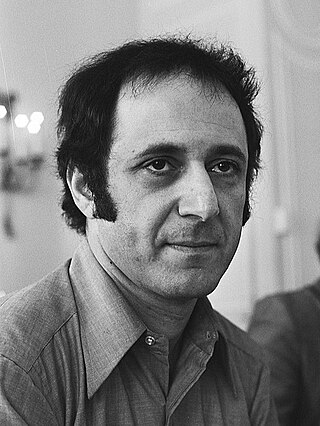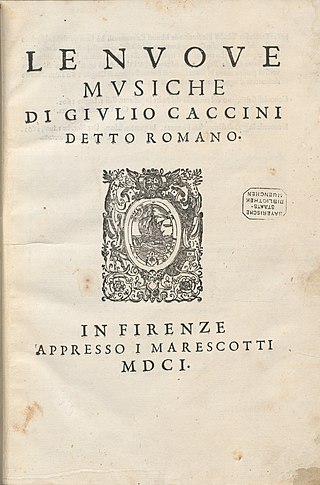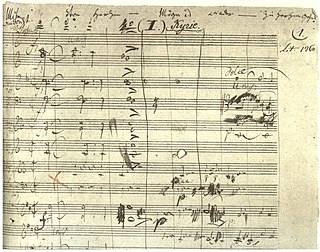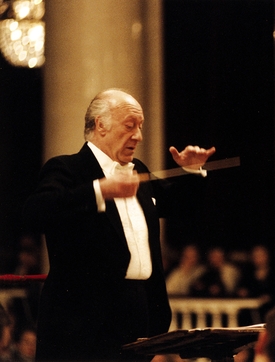
Renaissance music is traditionally understood to cover European music of the 15th and 16th centuries, later than the Renaissance era as it is understood in other disciplines. Rather than starting from the early 14th-century ars nova, the Trecento music was treated by musicology as a coda to Medieval music and the new era dated from the rise of triadic harmony and the spread of the contenance angloise style from Britain to the Burgundian School. A convenient watershed for its end is the adoption of basso continuo at the beginning of the Baroque period.

Stephen Michael Reich is an American composer who is known for his contribution to the development of minimal music in the mid to late 1960s. Reich's work is marked by its use of repetitive figures, slow harmonic rhythm, and canons. Reich describes this concept in his essay, "Music as a Gradual Process", by stating, "I am interested in perceptible processes. I want to be able to hear the process happening throughout the sounding music." For example, his early works experiment with phase shifting, in which one or more repeated phrases plays slower or faster than the others, causing it to go "out of phase." This creates new musical patterns in a perceptible flow.

Musical composition can refer to an original piece or work of music, either vocal or instrumental, the structure of a musical piece or to the process of creating or writing a new piece of music. People who create new compositions are called composers. Composers of primarily songs are usually called songwriters; with songs, the person who writes lyrics for a song is the lyricist. In many cultures, including Western classical music, the act of composing typically includes the creation of music notation, such as a sheet music "score", which is then performed by the composer or by other musicians. In popular music and traditional music, songwriting may involve the creation of a basic outline of the song, called the lead sheet, which sets out the melody, lyrics and chord progression. In classical music, orchestration is typically done by the composer, but in musical theatre and in pop music, songwriters may hire an arranger to do the orchestration. In some cases, a pop or traditional songwriter may not use written notation at all and instead compose the song in their mind and then play, sing or record it from memory. In jazz and popular music, notable sound recordings by influential performers are given the weight that written or printed scores play in classical music.

In music, monophony is the simplest of musical textures, consisting of a melody, typically sung by a single singer or played by a single instrument player without accompanying harmony or chords. Many folk songs and traditional songs are monophonic. A melody is also considered to be monophonic if a group of singers sings the same melody together at the unison or with the same melody notes duplicated at the octave. If an entire melody is played by two or more instruments or sung by a choir with a fixed interval, such as a perfect fifth, it is also said to be monophony. The musical texture of a song or musical piece is determined by assessing whether varying components are used, such as an accompaniment part or polyphonic melody lines.

In music, monody refers to a solo vocal style distinguished by having a single melodic line and instrumental accompaniment. Although such music is found in various cultures throughout history, the term is specifically applied to Italian song of the early 17th century, particularly the period from about 1600 to 1640. The term is used both for the style and for individual songs. The term itself is a recent invention of scholars. No composer of the 17th century ever called a piece a monody. Compositions in monodic form might be called madrigals, motets, or even concertos.

The Missa solemnis in D major, Op. 123, is a Solemn Mass composed by Ludwig van Beethoven from 1819 to 1823. It was first performed on 7 April 1824 in Saint Petersburg, Russia, under the auspices of Beethoven's patron Prince Nikolai Golitsyn; an incomplete performance was given in Vienna on 7 May 1824, when the Kyrie, Credo, and Agnus Dei were conducted by the composer. It is generally considered one of the composer's supreme achievements and, along with Bach's Mass in B minor, one of the most significant Mass settings of the common practice period.
The Florentine Camerata, also known as the Camerata de' Bardi, were a group of humanists, musicians, poets and intellectuals in late Renaissance Florence who gathered under the patronage of Count Giovanni de' Bardi to discuss and guide trends in the arts, especially music and drama. They met at the house of Giovanni de' Bardi, and their gatherings had the reputation of having all the most famous men of Florence as frequent guests. After first meeting in 1573, the activity of the Camerata reached its height between 1577 and 1582. While propounding a revival of the Greek dramatic style, the Camerata's musical experiments led to the development of the stile recitativo. In this way it facilitated the composition of dramatic music and the development of opera.

Giulio Romolo Caccini was an Italian composer, teacher, singer, instrumentalist and writer of the late Renaissance and early Baroque eras. He was one of the founders of the genre of opera, and one of the most influential creators of the new Baroque style. He was also the father of the composer Francesca Caccini and the singer Settimia Caccini.
Chorale settings refer to a wide variety of musical compositions, almost entirely of Protestant origin, which use a chorale as their basis. A chorale is a simple melody, often based on Gregorian chant, written for congregations to sing hymns. Chorale settings can be vocal, instrumental, or both.

Georges Lentz is a contemporary composer and sound artist born in Luxembourg in 1965 and that country's internationally best known composer. Since 1990, he has been living in Sydney, Australia. Despite his relatively small output and his reclusiveness, he is also considered one of Australia's leading composers. His music is inspired by the starry night sky in the Australian Outback and by Aboriginal art.
In the years centering on 1600 in Europe, several distinct shifts emerged in ways of thinking about the purposes, writing and performance of music. Partly these changes were revolutionary, deliberately instigated by a group of intellectuals in Florence known as the Florentine Camerata, and partly they were evolutionary, in that precursors of the new Baroque style can be found far back in the Renaissance, and the changes merely built on extant forms and practices. The transitions emanated from the cultural centers of Northern Italy, then spread to Rome, France, Germany, and Spain, and lastly reached England . In terms of instrumental music, shifts in four discrete areas can be observed: idiomatic writing, texture, instrument use, and orchestration.
Peshtpa is a musical composition by the Iranian composer Mehdi Hosseini completed in 2009. It is based on Kurdish Music. The work is scored for an oboe, bass clarinet, and violoncello. The Trio presented at the International Conference A REVERSE PERSPECTIVE which was included on a program that is dedicated to the anniversaries of the births of Pushkin, Gogol, and Futurism and displayed music of the St. Petersburg school of composition.
Concerto for String Quartet and Chamber Orchestra (2008) is a composition by Persian composer Mehdi Hosseini. It was premiered in Saint-Petersburg on 23 May 2010 by the Saint-Petersburg State Philharmonic Symphony Orchestra conducted by Brad Cawyer. The piece is dedicated to Nigel Osborne, and is based on Iranian regional folk music from Torbat-e Jam.

Seyed Mehdi Hosseini Bami is a Persian composer of contemporary classical music.
The Symphony of Monody is a 2005 composition by the Persian composer Mehdi Hosseini, performed and recorded in Saint Petersburg on 3 June 2007 by the Saint Petersburg Academic Symphony Orchestra conducted by Daniel Black. The work is based on folk music material of Lorestan.

Mansoor Hosseini is an Iranian-Swedish percussionist and composer of classical music, born in Iran, who studied in Paris and Brussels. His works comprise chamber music and orchestral pieces. He founded the Ensemble Themus in Gothenburg, focussed on theatrical music.
Vocalise is a composition for soprano, electronics, and orchestra by the American composer John Corigliano. The work was commissioned by the New York Philharmonic under the direction of Kurt Masur with financial contributions from the Francis Goelet Fund. It was given its world premiere by the soprano Sylvia McNair and the New York Philharmonic under Masur at Avery Fisher Hall on November 11, 1999. The piece is dedicated to Sylvia McNair.

Coro is a large scale composition for forty voices and forty instruments by Italian composer Luciano Berio.

Yuri Alexandrovich Falik was a Russian composer, orchestral conductor, cellist, a board member of the Leningrad (Saint-Petersburg) branch of the Composers' Union, and People's Artist of Russia.
Kareem Roustom is a Syrian-American composer, music director, and university teacher, noted mainly for his compositions of contemporary classical music, film scores and his collaboration with pop music artists. Among other musical ensembles, his compositions have been performed by the BBC Symphony Orchestra, the Boston Symphony Orchestra, the New York Philharmonic Orchestra and at festivals in the U.S., the Middle East and in Europe.










